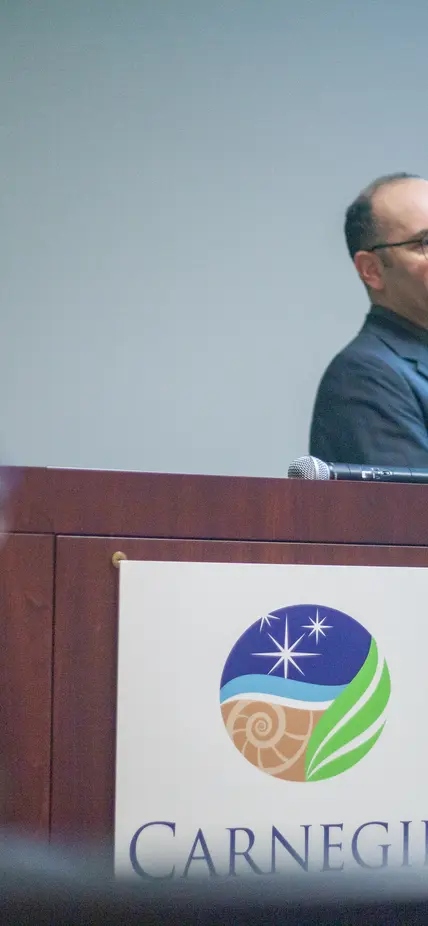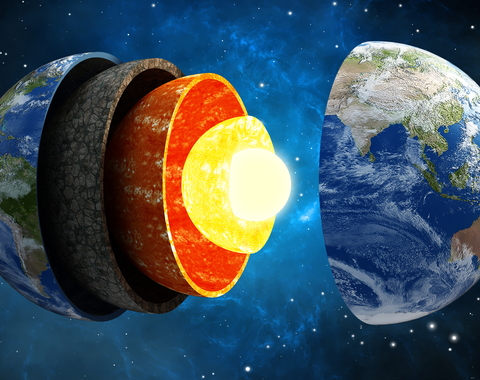In a recent Neighborhood Lecture titled "Is Earth’s Core Young at Heart?" Staff Scientist Peter Driscoll took guests on a journey to the center of our planet. A prominent figure in the field of geodynamics, Driscoll addressed a fundamental question: when did Earth's inner core solidify?
According to Driscoll, understanding this pivotal moment in our planet's history is crucial, as it provides key insights into Earth's geological evolution and influences a wide range of phenomena, including the protection provided by our atmosphere and even potentially our climate.
At the heart of Driscoll’s work—and the planet—is the geodynamo, a process that generates the magnetic field that shields Earth from cosmic radiation and is crucial for the existence of life as we know it.
“The geodynamo generates a magnetic field through fluid motion and induction,” said Driscoll. “But the energy is constantly trying to decay away into space, and you have to add something to make it keep going.”
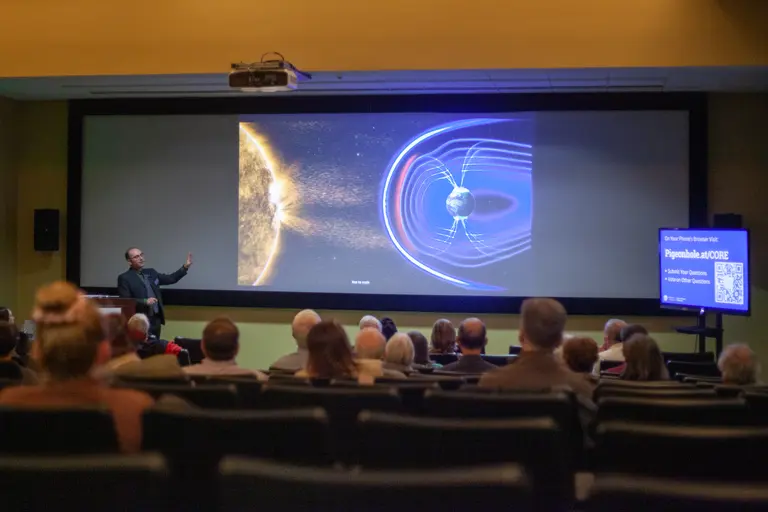
Driscoll explained that one major driver of this convective motion is the solidification and growth of the inner core. When the inner core solidifies, the solid iron core pushes out any impurities like hydrogen, carbon, or sulfur. Rejected from the inner core, they become a low-density fluid that floats to the top of the outer core and drives convection.
“We think this is the dominant buoyancy force in the Earth today,” said Driscoll, emphasizing that "ultimately, the inner core is a very valuable data point for constraining the thermal evolution of our planet.”
Because of its importance in driving the geodynamo, one of the central mysteries that Driscoll seeks to uncover is when exactly the Earth's inner core formed.
To address that question, Driscoll developed a complex 3D model that uses what we know about our planet’s composition to build a timeline of our planet’s inner workings. Using this model, he found evidence that the inner core solidified around 650 million years ago—an extremely recent event in the Earth's geological timeline. This theory challenges previous notions that our planet’s inner core is billions of years old and provides a new perspective on the evolution of our planet.
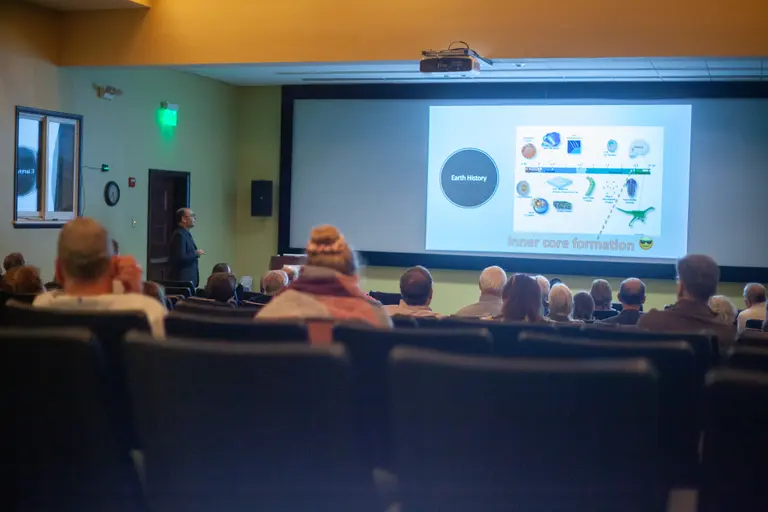
Driscoll acknowledged the challenges and controversies in this quest for knowledge. The complexity of Earth's geology, coupled with the limitations of current technology, leaves certain aspects of the inner core's history open to interpretation. Ongoing research and advancements in data collection offer hope for refining these models.
The talk also delved into the intriguing correlation between magnetic field variations and well-known geological events, such as the "snowball Earth" phenomenon. Through these comparisons, Driscoll showcased how understanding our planet’s internal history could reshape our understanding of past climatic conditions.
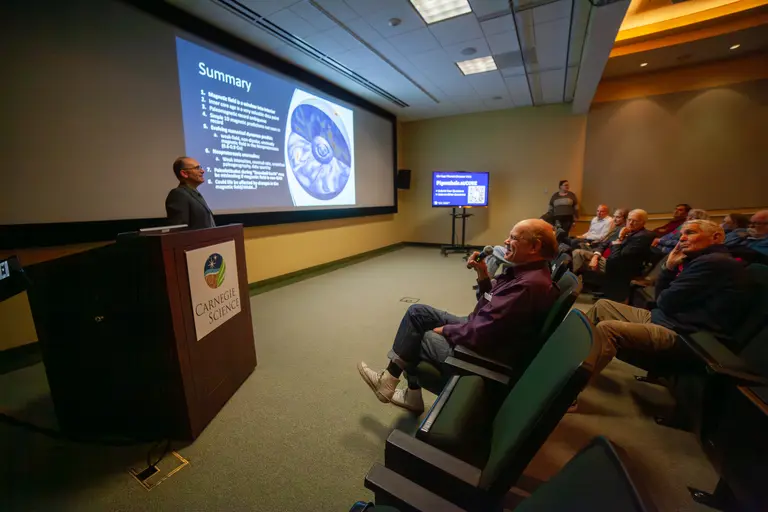
Throughout the talk, audience engagement was at an all-time high. Questions ranged from the possibility of harnessing Earth's magnetic energy to inquiries about magnetic fields on other planets and even what happens to life on Earth when the geodynamo eventually comes to a halt.
He answers that last question with a chuckle: "My model predicts that in about 4 billion years, the entire core will solidify, which is about when the Sun is predicted to engulf our planet. So it probably won’t be the loss of geodynamo that gets us!”
Ultimately, by unlocking the mysteries of Earth's inner core, scientists like Driscoll aim to better understand our planet's geological processes and their deeper implications for planetary evolution and the development of life on this and other planets.
Driscoll stated, "Hopefully, I convinced you that the Earth's inner core is really interesting—especially when we go back in time.”
